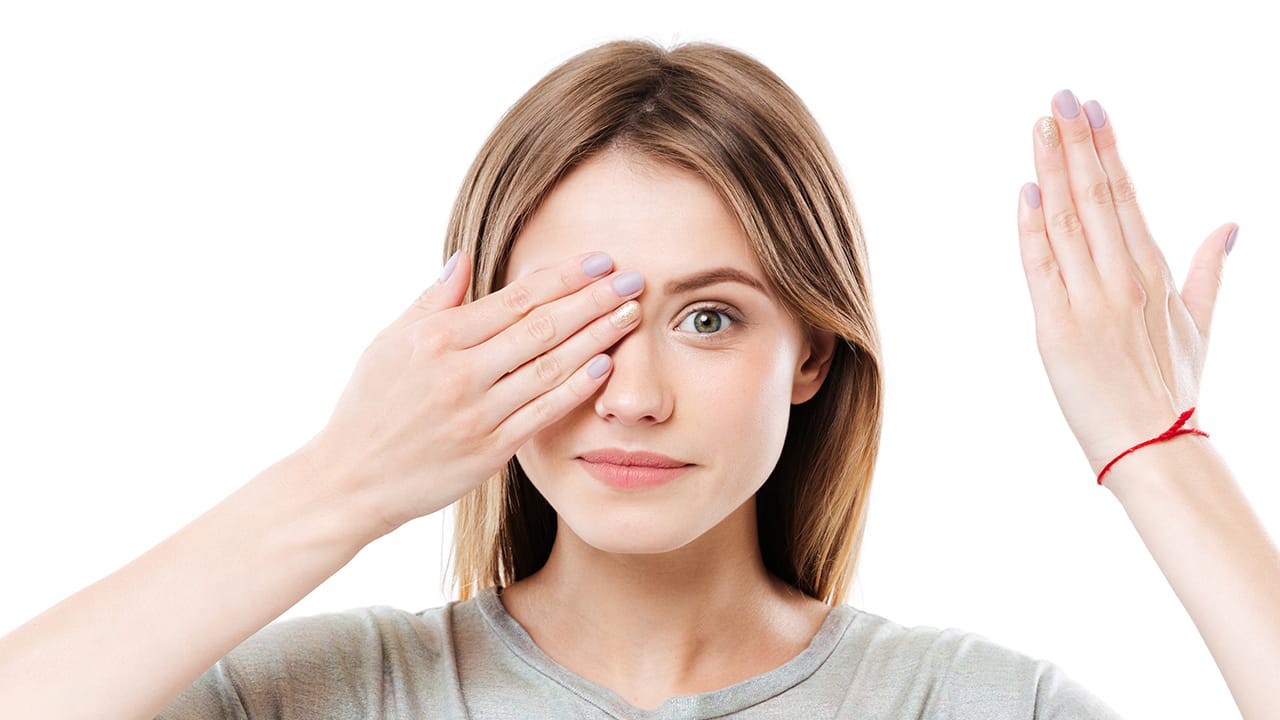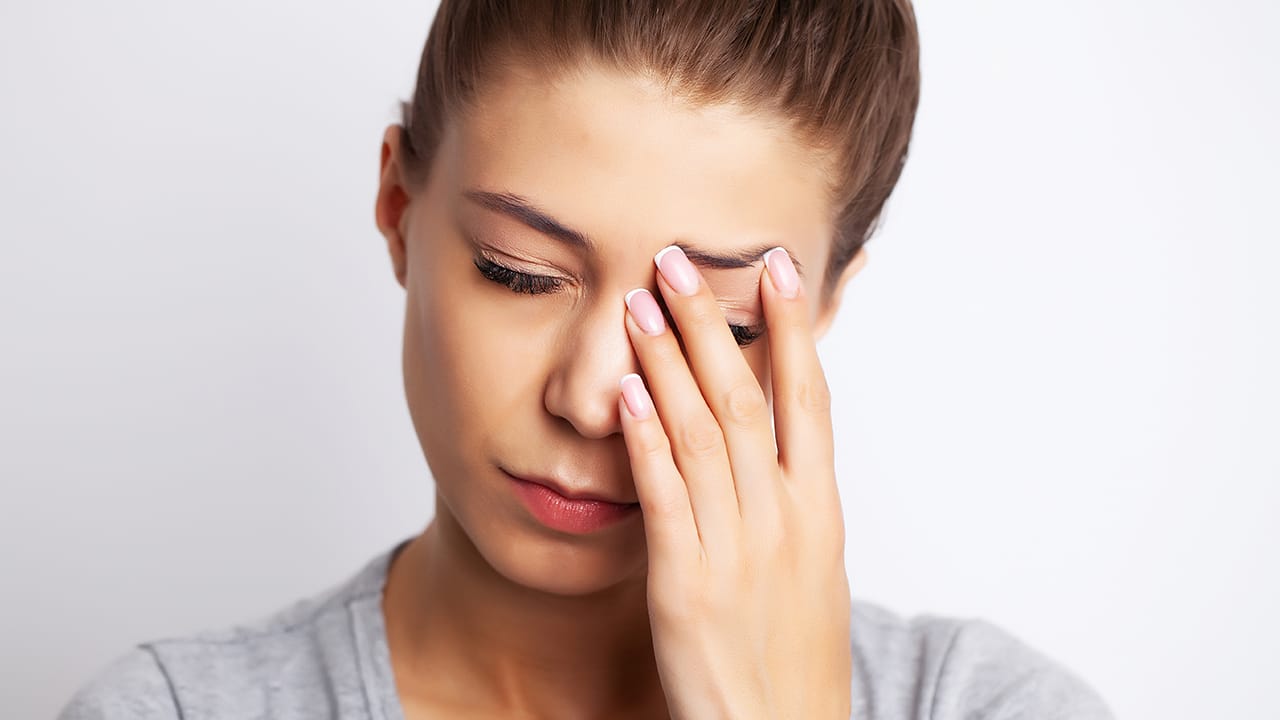- birinci
- 0 Comments
Eye twitching is a movement disorder characterized by involuntary and sequential contractions of the eyelid muscles, referred to in medical terms as “myokimia”. These contractions, which usually last for seconds, exhibit a wavy rhythm by recurring intermittently throughout the day in most people. Although twitching is most commonly seen in the lower eyelid, it can also affect the upper eyelid and sometimes occur in both eyes.
Eye twitching develops due to increased stimulation of motor fibers that provide nerve conduction. This additional stimulus to the muscle fibers causes the lid to move in the form of vibration; therefore, no pain is felt during the twitching, but a trembling feeling of fullness occurs. External triggers such as stress, fatigue, excess caffeine and prolonged screen use usually initiate the contraction or aggravate the existing contraction.
Eye twitching is a temporary and benign condition in most cases; it may last for a few days and then disappear on its own. However, if the twitching continues for weeks without interruption, becomes so strong that the eyelid closes completely, or spreads to other muscle groups in the face, an underlying neurological problem should be considered and a specialist opinion should be sought.
Eye twitching can rarely develop into a more severe condition called “blepharospasm”. In this case, involuntary contractions can affect not only the eyelid but also the cheek and forehead muscles, causing sensitivity to light and limited vision. Early diagnosis is important in determining the appropriate treatment plan and preventing possible complications.
İçindekiler
ToggleWhat is Eye Twitching?
Eye twitching is a movement disorder characterized by involuntary and sequential contractions of the eyelid muscles, referred to in medical terms as “myokymia”. These contractions, which usually last for seconds, repeat intermittently throughout the day in most people and exhibit a wavy rhythm. Although twitching is most commonly seen in the lower eyelid, it can also affect the upper eyelid and sometimes occur in both eyes.
Eye twitching develops due to increased stimulation of motor fibers that provide nerve conduction. This additional stimulus to the muscle fibers causes the lid to move in the form of vibration; therefore, no pain is felt during the twitching, but a trembling feeling of fullness occurs. External triggers such as stress, fatigue, excess caffeine, and prolonged screen use usually initiate the contraction or aggravate the existing contraction.
Eye twitching is a temporary and benign condition in most cases; it may last for a few days and then disappear on its own. However, if the twitching continues uninterrupted for weeks, becomes so strong that the eyelid closes completely, or spreads to other muscle groups in the face, an underlying neurological problem should be considered and a specialist opinion should be sought.
Eye twitching can rarely develop into a more severe condition called “blepharospasm.” In this case, involuntary contractions affect not only the eyelid but also the cheek and forehead muscles, causing sensitivity to light and limited vision. Early diagnosis is important in determining the appropriate treatment plan and preventing possible complications.
Why Does Eye Twitching Happen?
The question of why eye twitching occurs is closely related to both our daily habits and our physical condition. These involuntary contractions basically begin with an increase in nerve stimuli to the eyelid muscles; however, the factors that trigger this increase are quite diverse. The most common triggers are looking at a computer, phone or tablet screen for a long time. The blink reflex, which becomes rare while focusing on the screen, causes the corneal surface to dry, and the dryness causes the eyelid muscles to fatigue and tremble. In addition, stress hormones secreted during periods of intense work tempo, exam stress or emotional tension sensitize the nerve endings and facilitate twitching attacks. Insufficient sleep, just as it causes muscle pain, also causes the eyelid fibers to not relax properly.

The answers to the question of what causes eye twitching also include eating habits. Stimulants in caffeine, nicotine and energy drinks lower the threshold value of muscle cells, which initiates contraction even at the slightest signal. Minerals such as magnesium, potassium and calcium play a critical role in the regular operation of muscle-nerve transmission; in the event of a deficiency of these minerals, the tremor threshold in the eyelid muscles decreases. In seasonal allergy attacks, itching occurs around the eyes due to increased histamine levels; frequent eye rubbing both creates mechanical irritation and stimulates the muscles, triggering twitching. Failure to observe hygiene rules when using contact lenses or wearing lenses for a long time can also cause irritation on the surface of the eye and increase the frequency of twitching episodes.
Rarely, neurological diseases or inflammatory processes developing at the edge of the eyelid may underlie eye twitching. If the twitching lasts for days, spreads to other parts of the face or is accompanied by blurred vision, it is necessary to see an ophthalmologist; because early diagnosis both facilitates symptom control and enables timely treatment of possible serious causes.
Eye Twitching Symptoms
• During an eye twitching attack, a rhythmic “pulsation” or trembling sensation occurs in the eyelid, which may disappear within seconds and recur.
• In long-lasting contractions, the image fluctuates for a short time; focusing and reading become difficult.
Continuous pulsations in the lower or upper lids can cause eye fatigue and a slight burning sensation later in the day.
Discomfort increases when looking at bright light; the blink reflex becomes frequent, and tension is felt in the lid skin in the form of a “pit pit”.
When twitching becomes frequent, the lid muscle sometimes goes into spasm to the point of completely closing; this can cause difficulty in driving or doing fine work.
• Chronic contractions can trigger headaches and tension in the forehead; the person feels the need to rub their eyes, which can increase redness and irritation.
• If eye twitching symptoms spread to other muscles in the face, continue for days without interruption, or are accompanied by blurred vision, it is necessary to see an ophthalmologist for a neurological evaluation.
How is Eye Twitching Treated?
Eye twitching treatment starts with simple lifestyle changes in the first step, and most people find relief with these basic measures. Regular and uninterrupted sleep allows the eye muscles to regenerate throughout the night; exercising several times a week reduces stress and reduces muscle tension. If you have to spend a long time in front of the screen, looking away every twenty minutes and moisturizing your eyes reduces the risk of dry eyes. Limiting stimulants such as caffeine, energy drinks, and cigarettes also relieves involuntary contractions in the eyelid muscle.
Adding foods rich in magnesium, potassium, and vitamin B to the diet as part of eye twitching treatment balances nerve-muscle transmission. When foods such as almonds, spinach, oats, and green lentils are regularly included in the daily menu, the muscle spasm threshold increases. The warm-cold compress cycle applied around the eyes relaxes the eyelid muscle, stimulates circulation and reduces the frequency of twitching.
If eye twitching treatment does not produce results within two to three weeks despite basic precautions, it is necessary to see an ophthalmologist. During the examination, the eyelid structure, tear quality and refractive errors are evaluated. If necessary, eye dryness is treated with moisturizing drops; if infections such as blepharitis are detected, appropriate drops or ointments are started. In rare cases of resistant twitching, botulinum toxin injection can be applied. This procedure temporarily blocks the excessive nerve impulse sent to the eyelid muscle and silences the spasms for a few months.
The main goal in the eye twitching treatment process is to identify and eliminate the triggering factors. When a personalized approach is combined with sleep hygiene, stress management and a diet that supports eye health, twitching attacks are brought under control in most patients in a short time.
When is Eye Twitching Dangerous?
Although twitching is mostly benign, some signals may indicate an underlying neurological or ocular problem. It is essential to see an eye doctor in the following cases:
• If the twitching lasts longer than a week and recurs without a break
• If it spreads to other parts of the facial muscles—cheek, lip or jaw
• If the eyelid contracts so severely that it closes completely
• If double vision, blurred vision, headache or extreme sensitivity to light are added to the picture
These findings may indicate disorders originating from the central nervous system or inflammatory diseases affecting the eye. Early diagnosis both protects eye health and prevents more serious problems.
Factors That Trigger Eye Twitching
Daily life choices can increase eye twitching. Especially intense stressful processes such as exam periods in young people and work deadlines in adults increase the signals that trigger the eyelid muscles. Looking at blue-light-emitting screens for a long time paves the way for dry eyes. Rapidly increasing caffeine intake stimulates nerve conduction and lowers the contraction threshold. Inadequate nutrition and lack of minerals such as magnesium and potassium make the signals going to the muscle irregular. In addition to these, seasonal allergies cause itching and restlessness in the eyelid, facilitating twitching.
What Can Be Done to Protect Yourself from Eye Twitching?
Preventive steps prevent twitching from both occurring and becoming chronic. Short walks in the fresh air in the early hours of the day reduce stress and provide oxygenation advantages to the eyes. Keeping the screen distance at least fifty centimeters in the work environment prevents the muscles from constantly being forced to focus closely. Drinking plenty of water maintains the electrolyte balance in the body; This helps muscle movements to proceed regularly. Using preventive drops at the beginning of the season in allergic individuals will alleviate eyelid itching and the involuntary contractions that result from it. Regular eye examinations will allow early detection of contractions caused by dry eye, eyelid margin inflammation or early-stage glaucoma.
